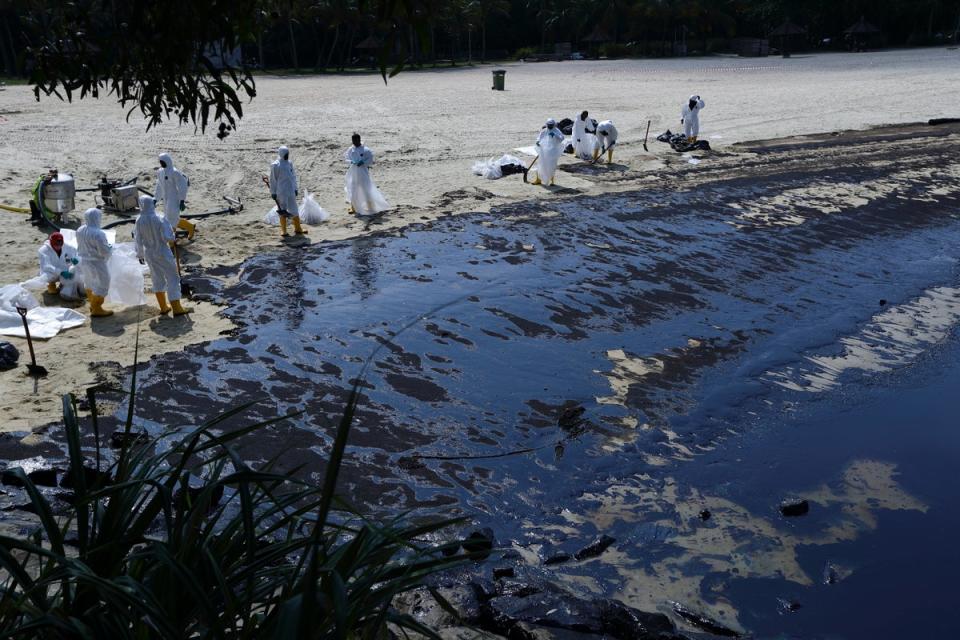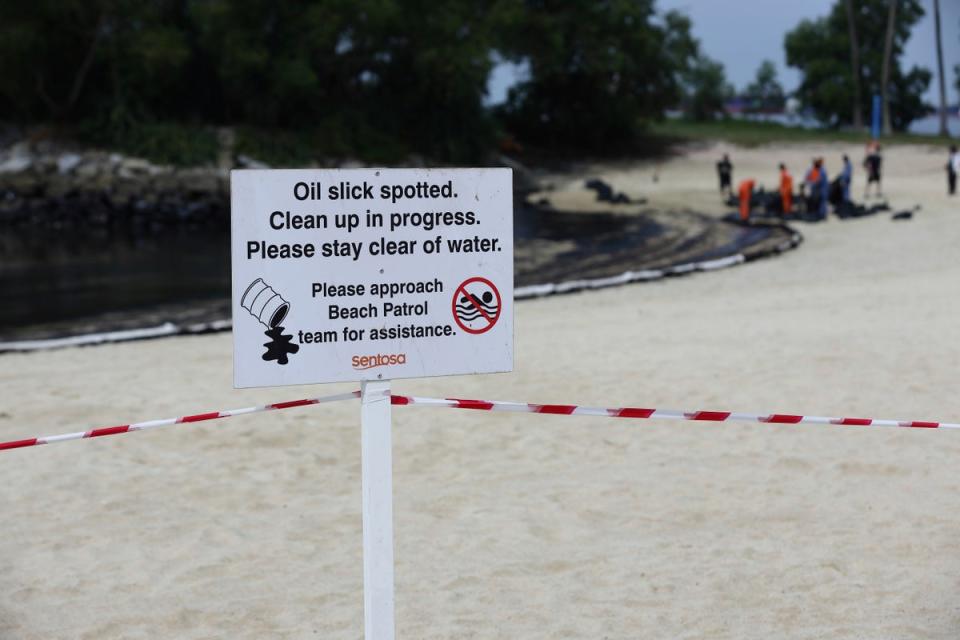Singapore rushes to clean up major oil spill on southern coastline after shipping accident
A massive oil spill has blackened Singapore’s southern coastline with authorities scrambling to clean up.
A Dutch-flagged dredger collided with Singaporean fuel tanker Marine Honour on Friday which was anchored in the nation’s shipping lanes.
Authorities said that the dredger, after losing engine power, drifted into the tanker, rupturing its oil tank.
The accident resulted in the release of approximately 400 tonnes of oil, much of which has already reached the shore, blackening the coastline.
“The allision caused a rupture of one of the Marine Honour’s oil cargo tanks, and its contents of low-sulphur fuel oil were released to the sea,” Singapore maritime and environment agencies said in a joint statement.
Although the leak has been contained, on Monday, the water was still black and oily, locals said.

Part of the beachfront at a public park, beaches at three southern islands, and a nature reserve have been closed to facilitate clean-up efforts.
The cleanup operation was on over the weekend with 250 workers trying to trap the oil. Oil Spill Response Limited, an industry-funded co-operative that responds to spills, said it will deploy floating containment and recovery devices to corral the oil on the water surface,
Booms have been set up under a mile of containment to trap the oil and another mile of the temporary barriers will be laid over the next few days to prevent further spread of oil onto the shore, the statement said.
Two skimmer craft will then lift the oil into storage tanks, it said.

About 1,500 people have also volunteered to help with the clean-up, the Singaporean government said. Many volunteers were deployed to patrol the park for early signs of oil slicks.
The National Parks Board has also deployed oil-absorbing booms to protect mangroves at other parks that have not been affected so far.
There are concerns for wildlife getting impacted, with some local media reports showing one small dead fish and a kingfisher covered in oil.
Conservationists and biologists are monitoring the full extent of the damage on marine and wildlife. However, initial biodiversity surveys have come back with no major damage reported.
“No significant impact to marine biodiversity had been observed, though oil was observed on the roots of some mangrove plants in the area,” Dr Karenne Tun from the National Parks Board told the city’s Straits Times newspaper.

 Yahoo News
Yahoo News 
